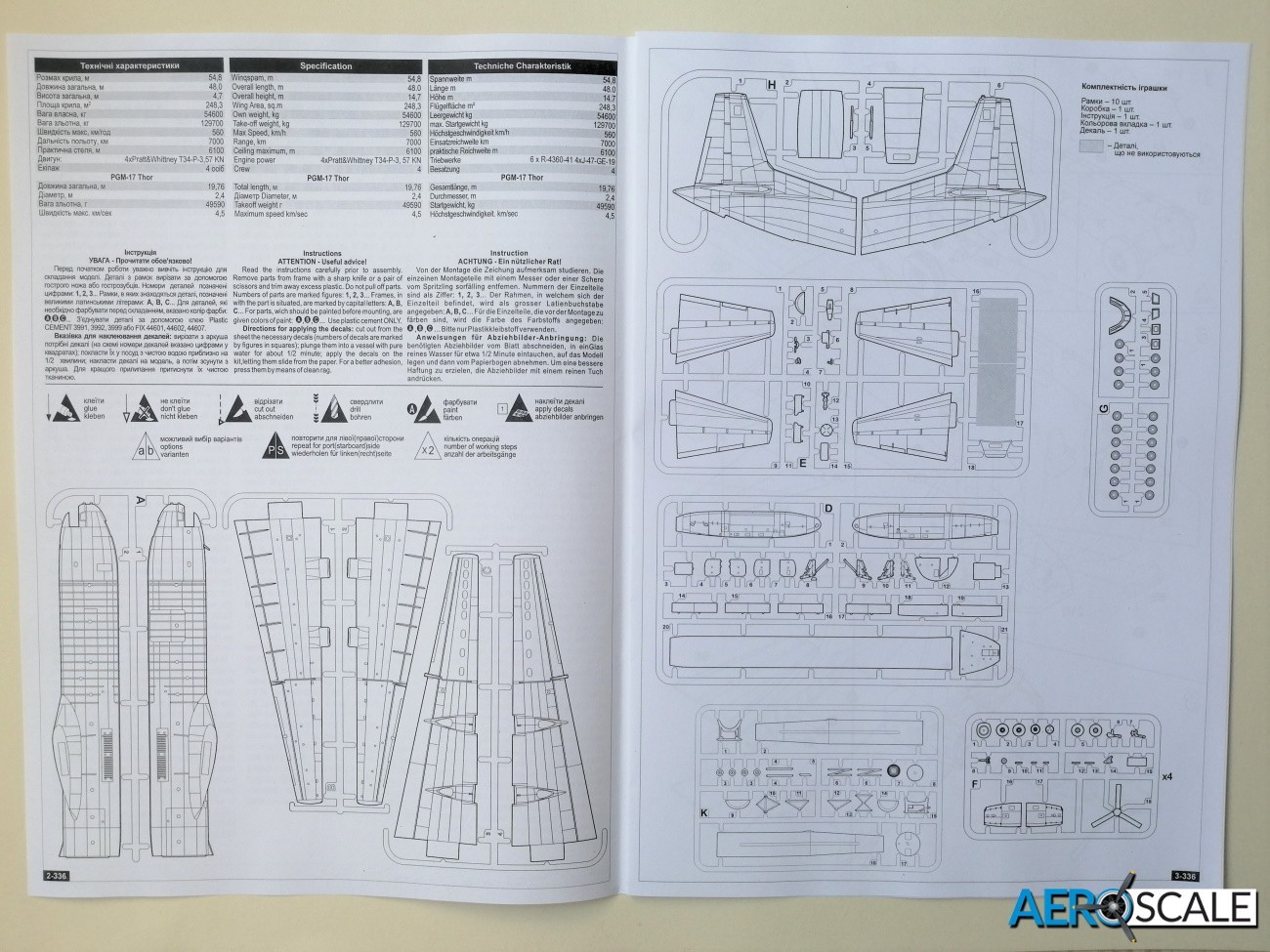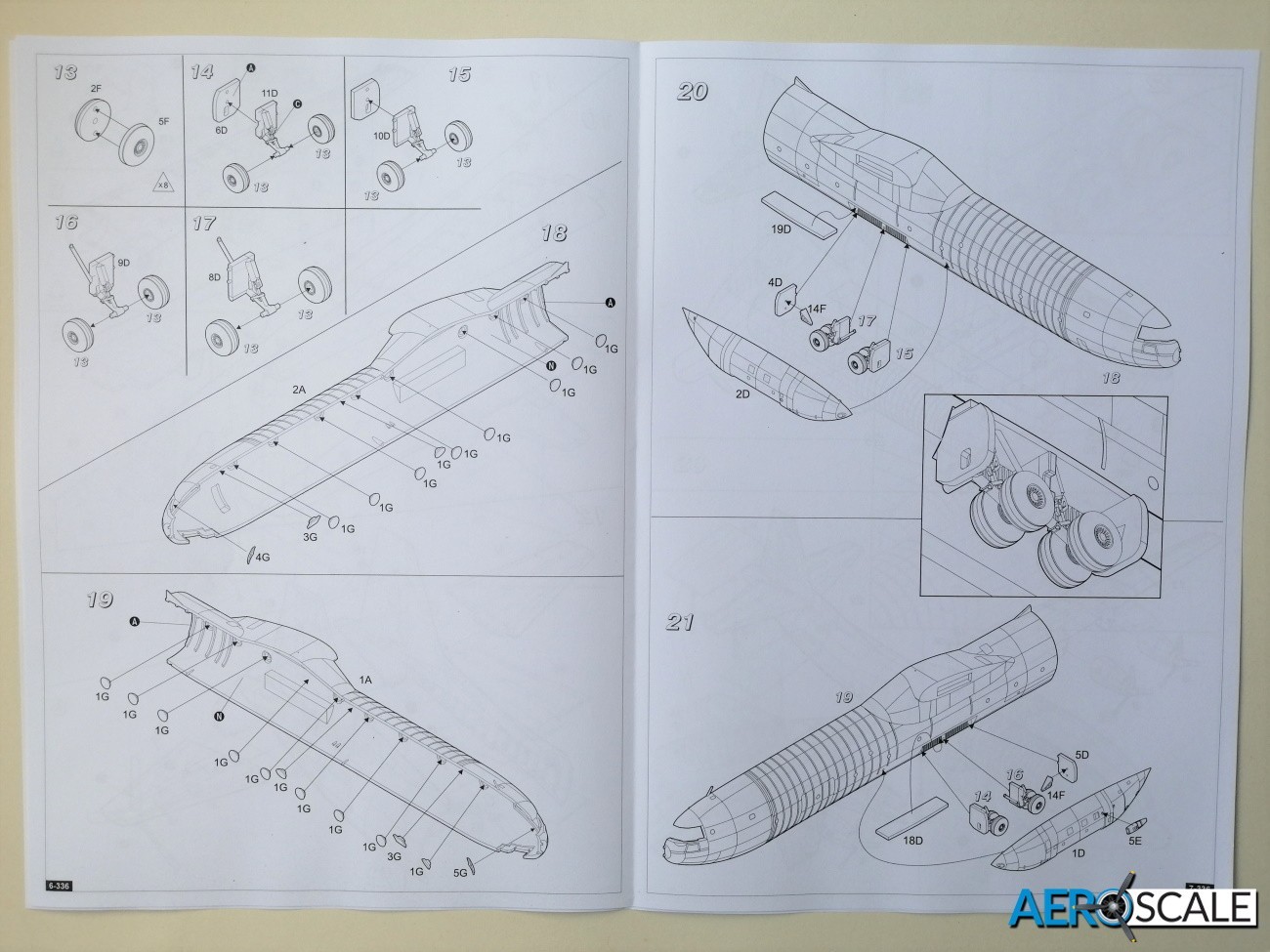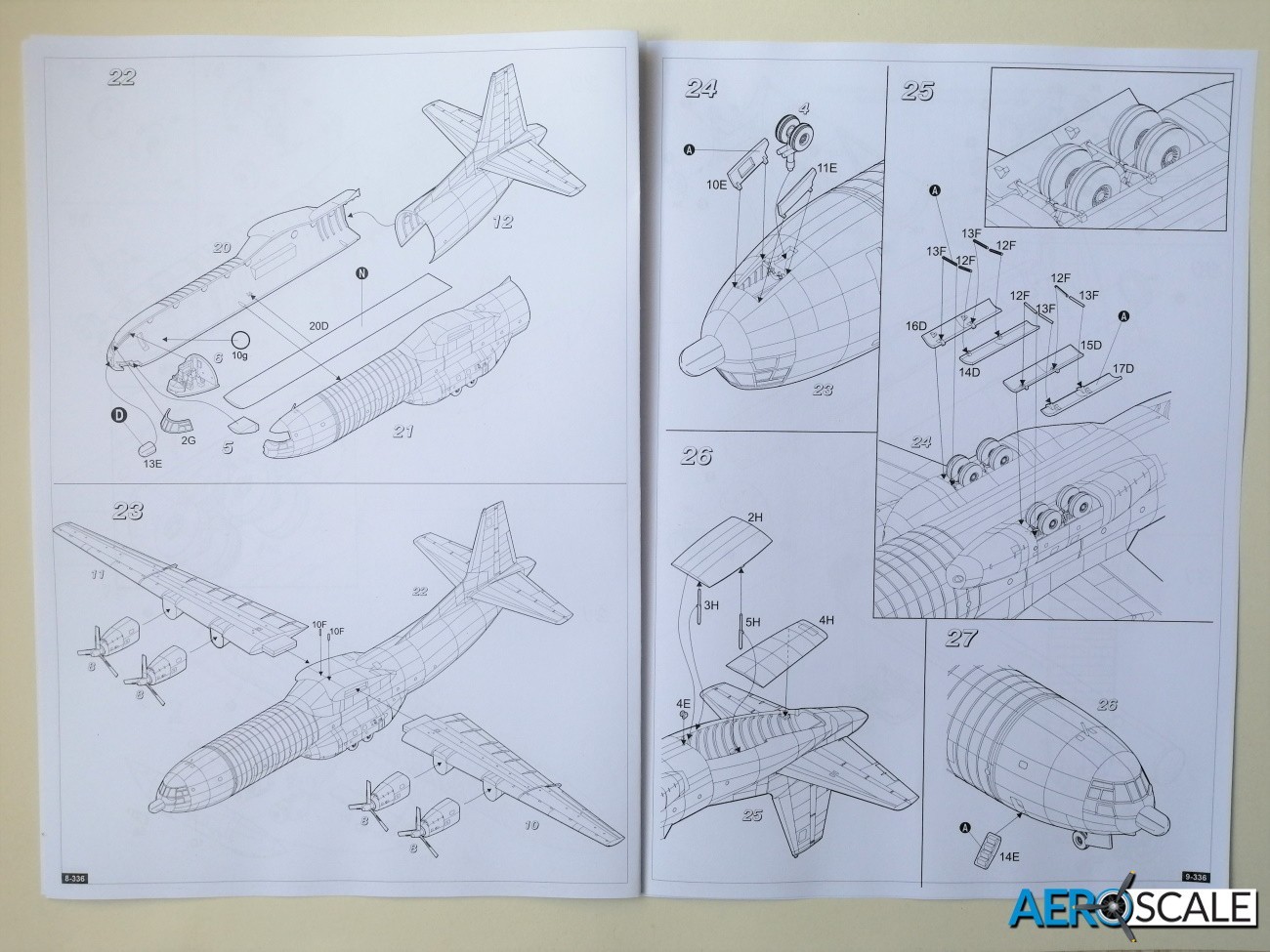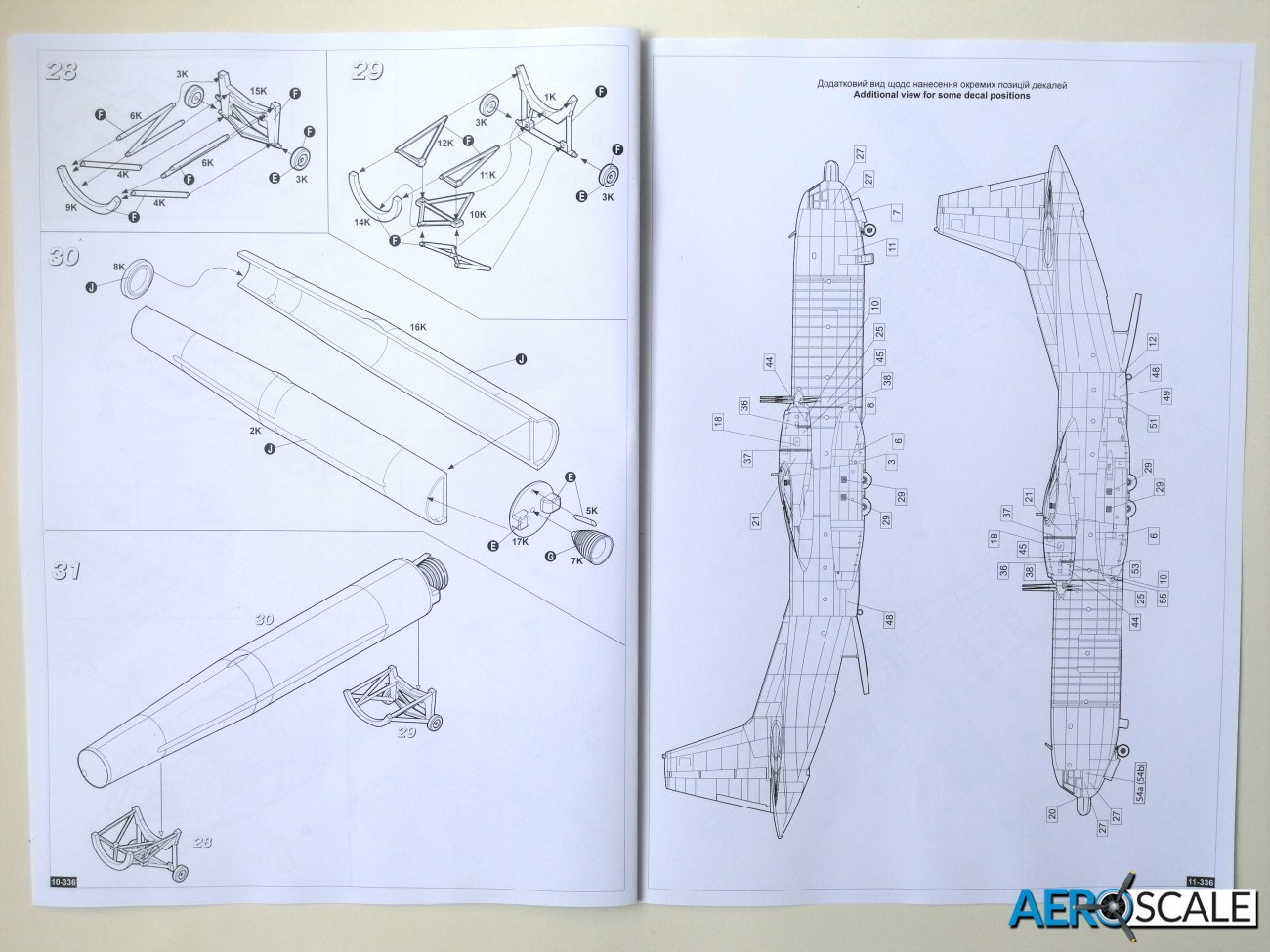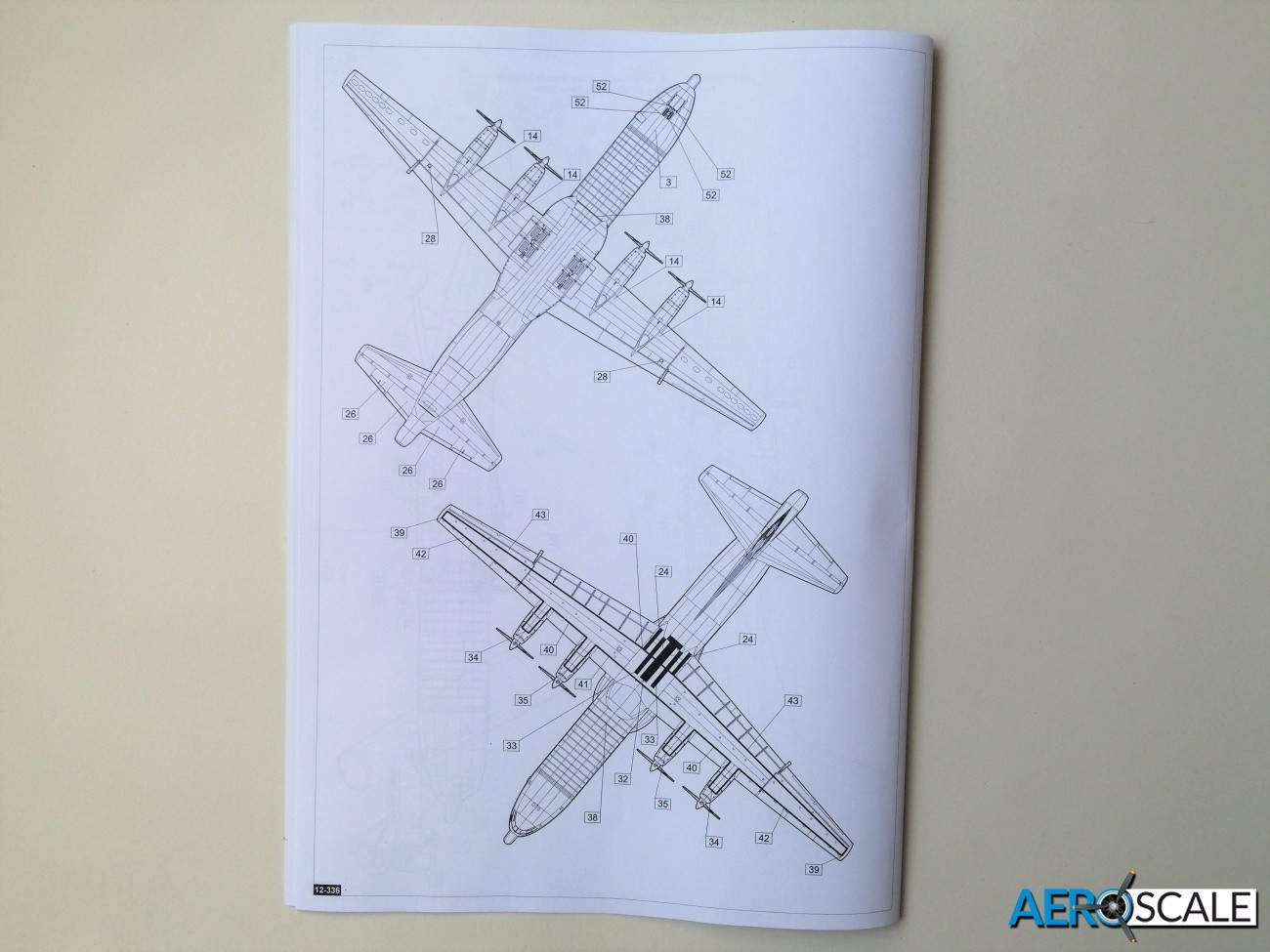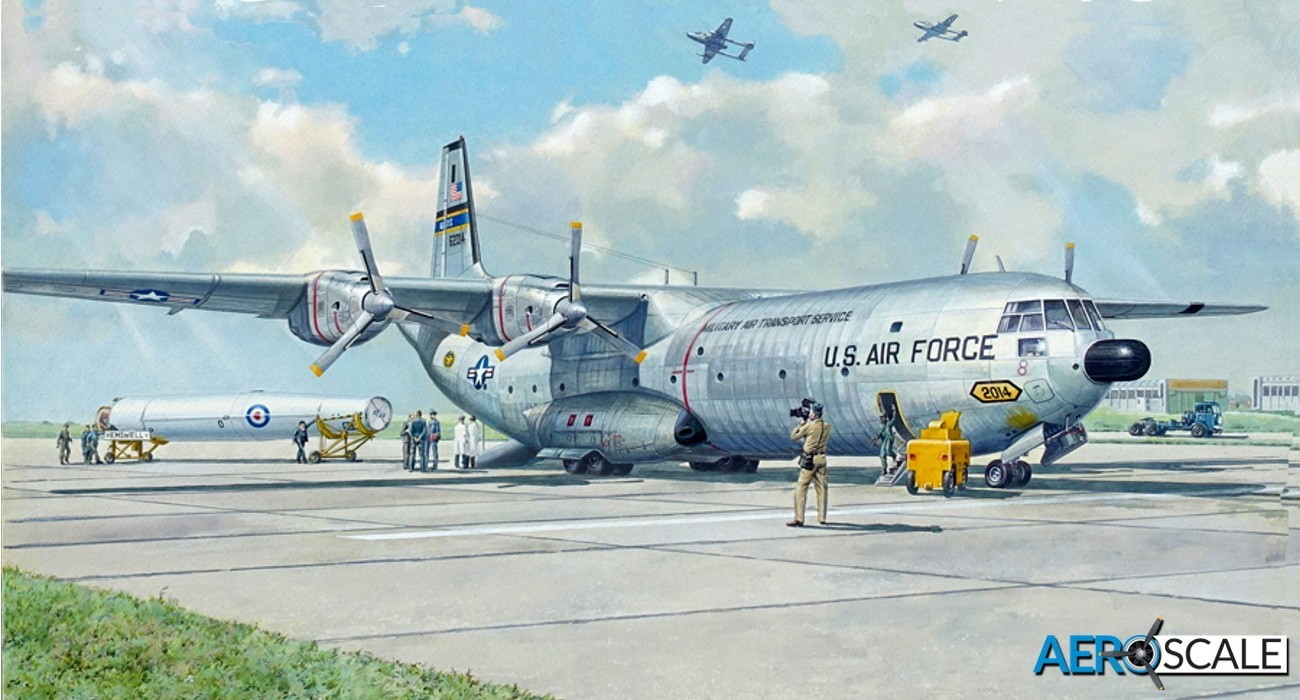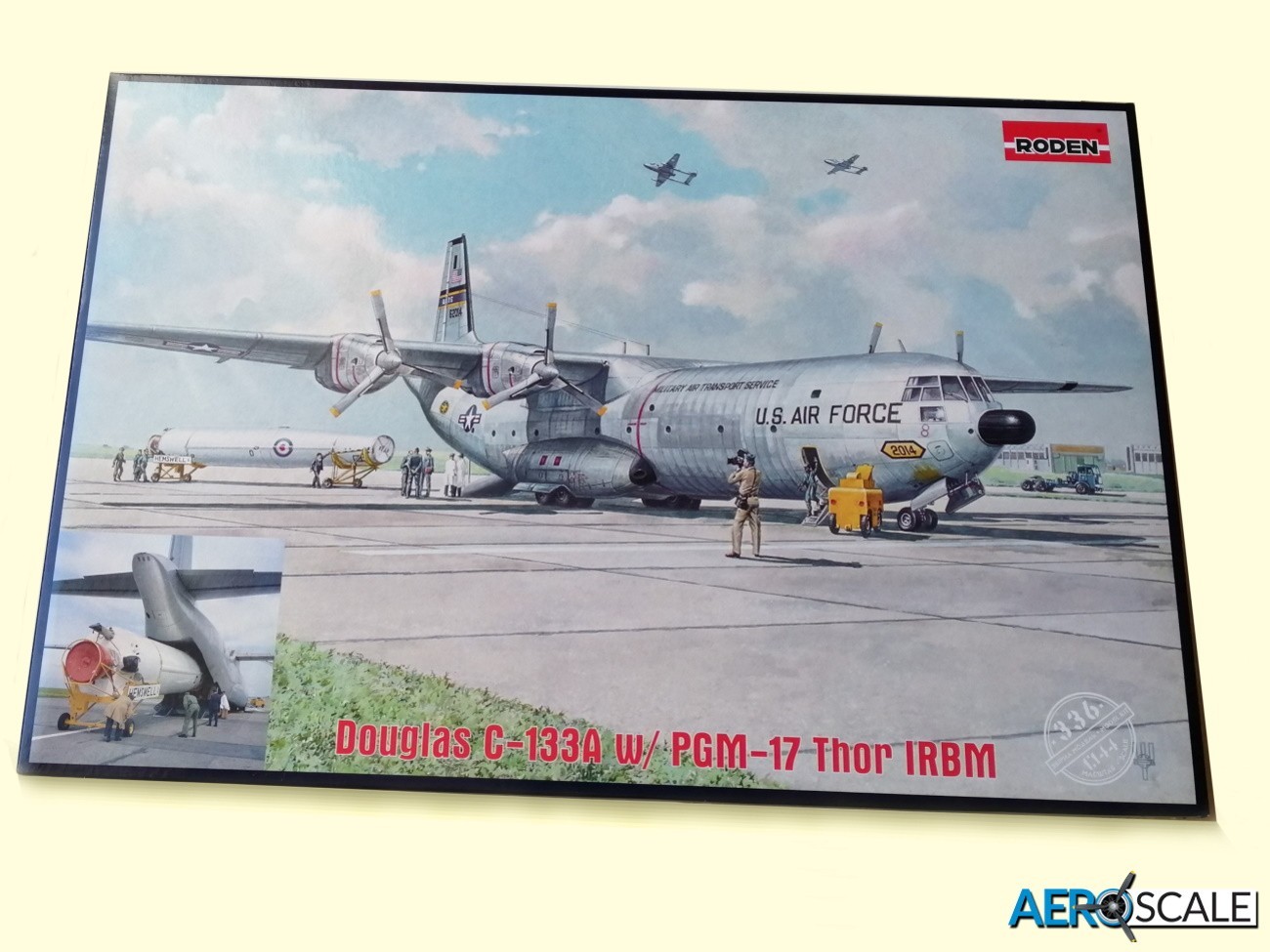
Background
The C-133 Cargomaster was the first strategic airlifters to enter service with MAC [Military Airlift Command] and the first and last strategic lifter to be powered by turboprops. The Douglas C-133 is considered the archetype design for cargo aircraft over the last fifty years. With such features as the unobstructed cargo bay, shoulder mounted wings and the sponson containing the undercarriage. Now familiar features on contemporary cargo lifters. Unusually there were no prototypes built, the C-133 entered service directly. Fifty Cargomasters were built: thirty-five C-133A and fifteen C-133B. Two: an ‘A’ and a ‘B’ were retained by Douglas for test and development. The C-133 was worked hard particularly during the Vietnam war and also for transporting ballistic missiles such as the Atlas, Titan and Minuteman missiles. It was utilised to carry Saturn and Titan rockets for the Mercury, Gemini and Apollo space programmes. A reflection of how hard they were worked was that the airframe was designed for 10,000 hrs, but was extended to 19,000 hrs. At the time the Lockheed C-5 Galaxy was introduced into service, the Cargomaster were literally creaking at the seams. The loss rate was grim with ten aircraft crashing and one being destroyed on the apron over fourteen years of service. Apparently, it was not a popular aircraft to fly. With the introduction of the Lockheed C-5 the Cargomaster was quickly removed from service. The C-133 set a number of unofficial records for military transport aircraft flying across the Atlantic and the Pacific.
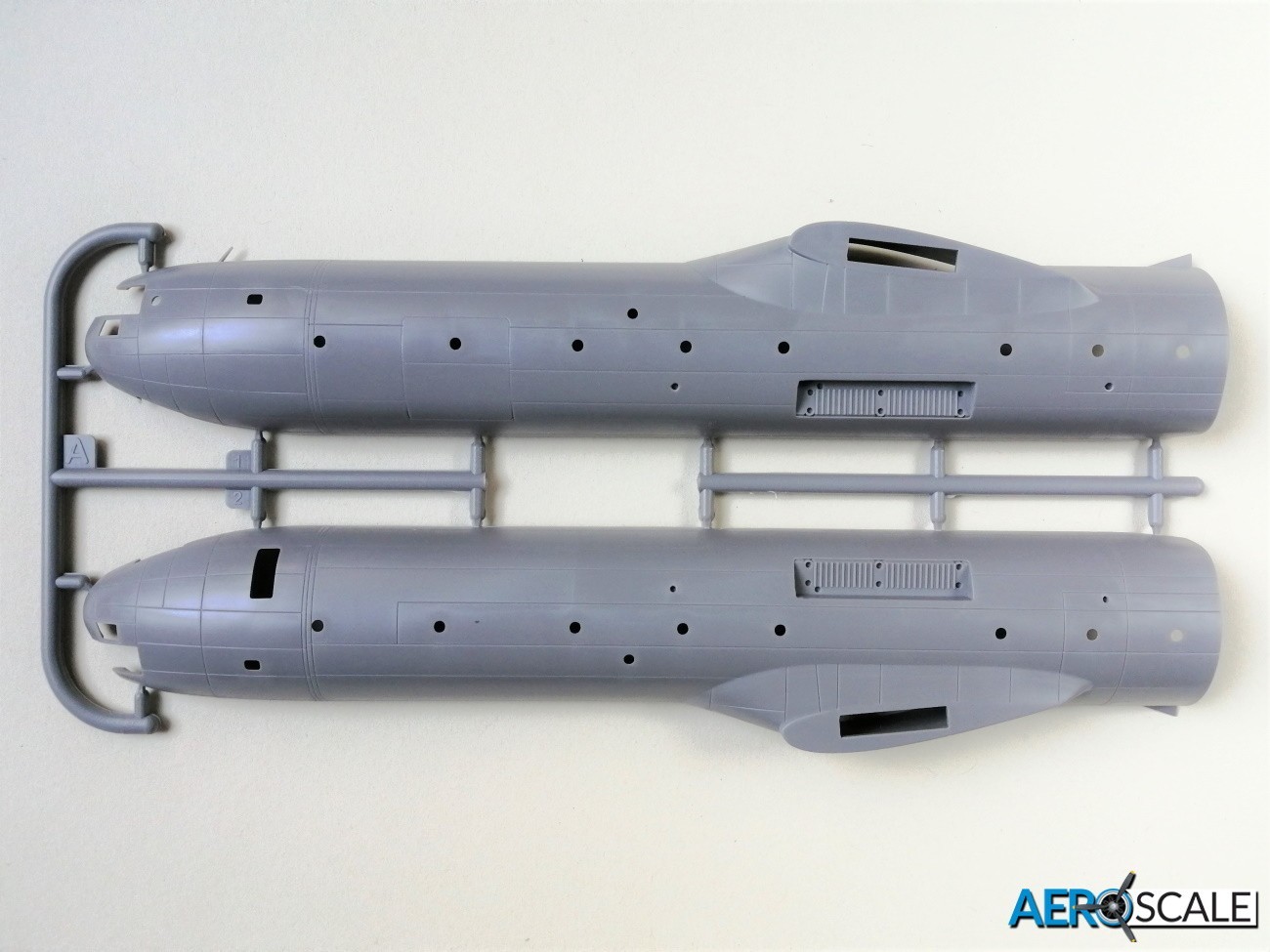
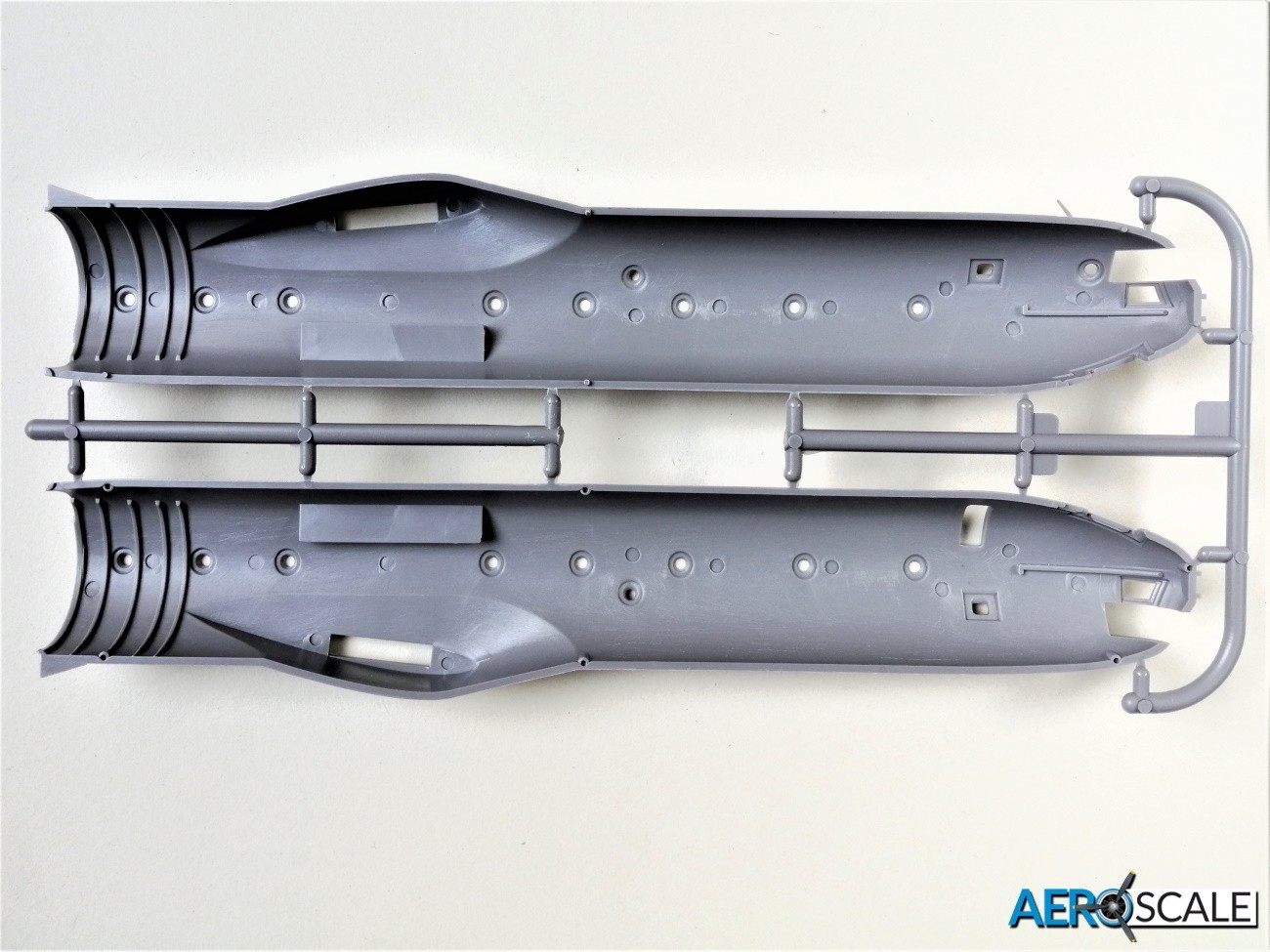
The Douglas PGM-17A Thor intermediate-range ballistic missile was the first ballistic missile used by the USAF. The Thor’s main engine was the Rocketdyne LR79-NA-9 with a couple of Rocketdyne LR101-NA verniers. All three were fuelled by liquid oxygen [LOX] and RP-1 kerosene. The W49 warhead had a yield of 1.44 megatons. They were stationed in the UK under the codename ‘Project Emily’, as a stop gap until the Americans could develop and deploy longer ranged ICBM’s based on home turf. Thor was first deployed to the UK in August 1958, and was subsequently operated by 20 squadrons of Bomber Command

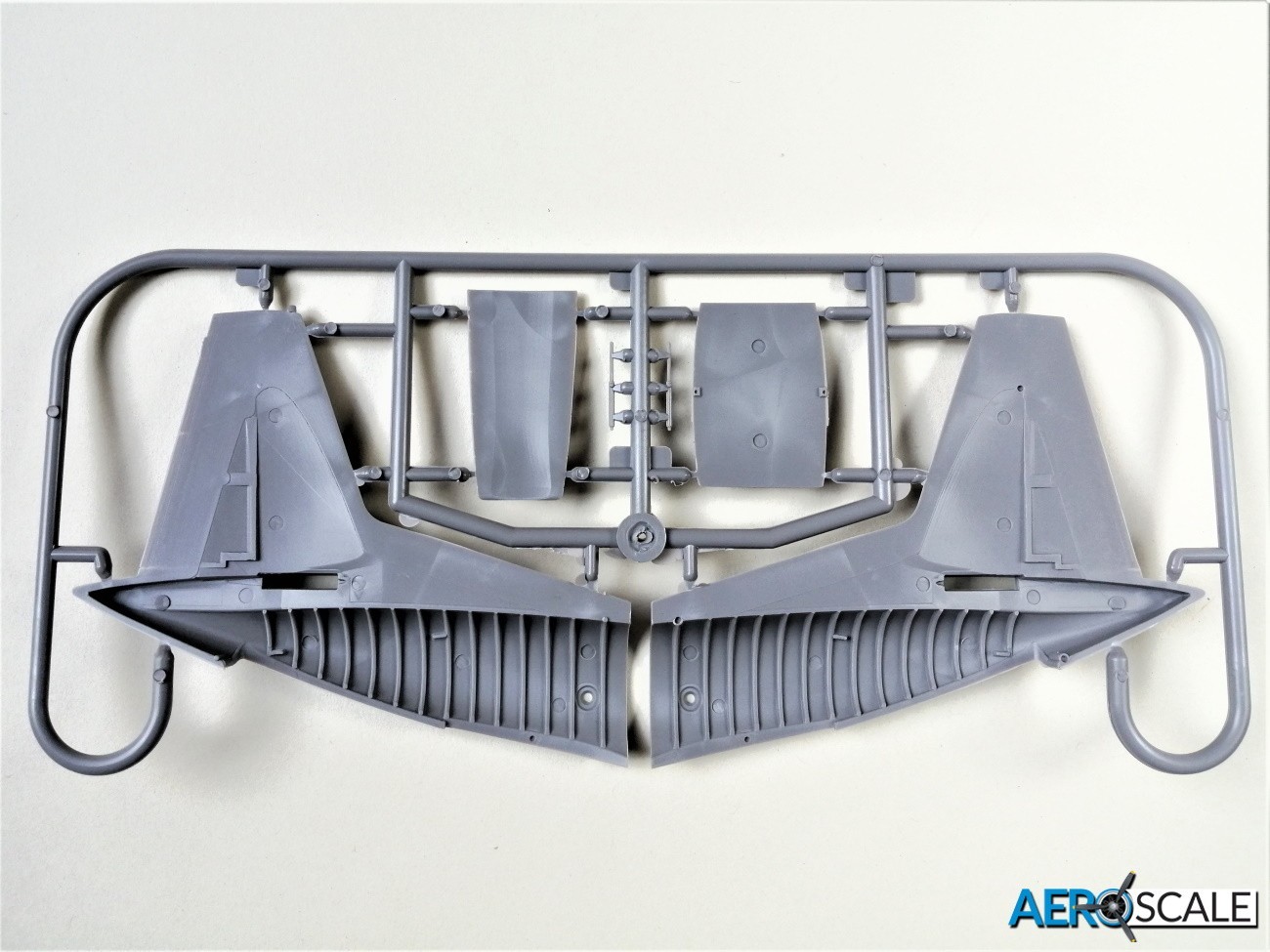
The Kit
Inside the large box you will find:
- 10 x grey sprues for the C-133
- 1 x grey sprue for the PGM-17A Thor IRBM
- 1 x clear sprue
- 1 x sheet of decals
- 1 x twelve-page construction guide.
- 1 x sheet painting and decal placement guide.

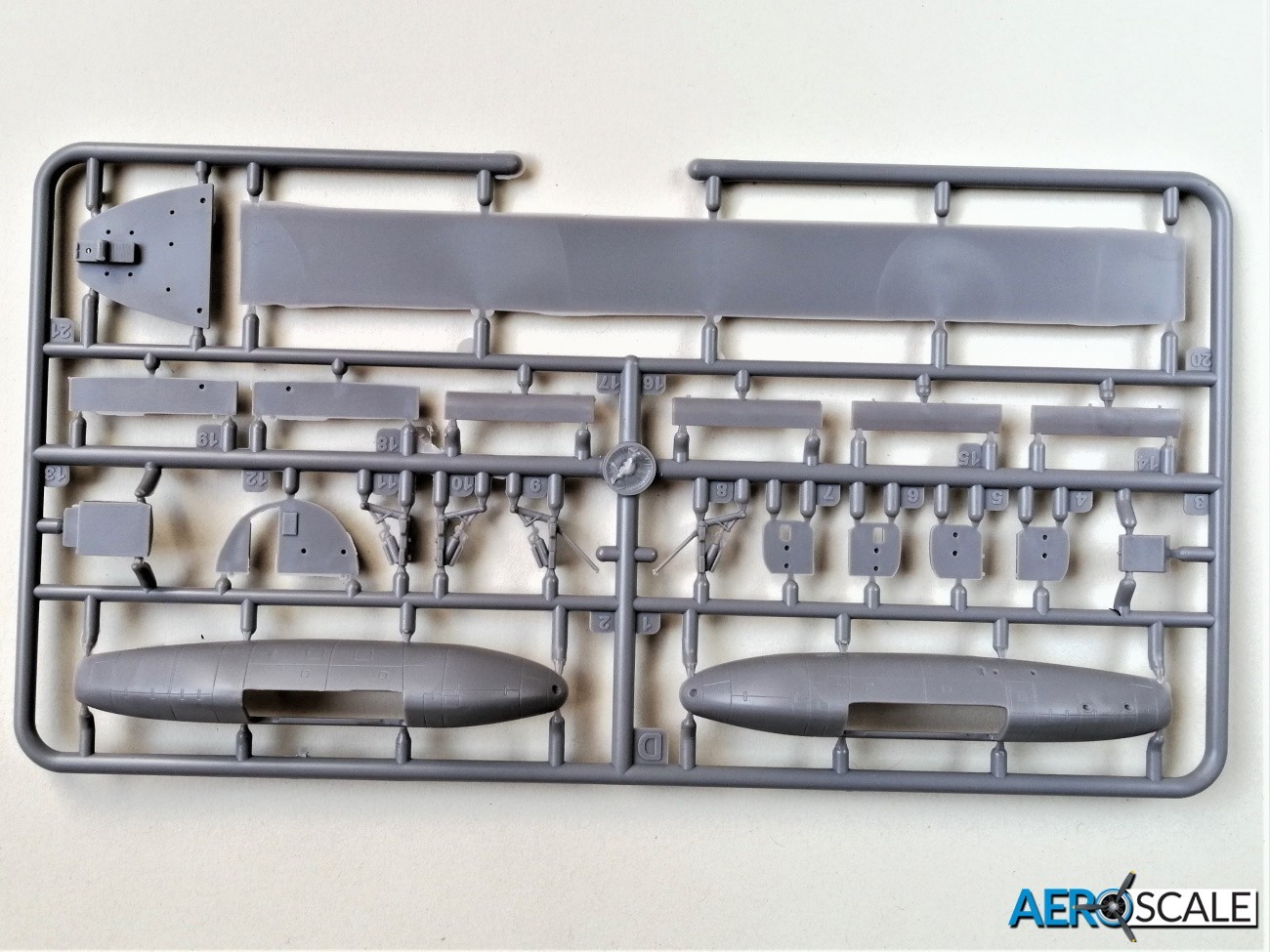
First impressions are positive, the size of the kit is impressive even in 1:144 scale. Some of the surfaces do have a slight texture on them, so they will need to be cleaned up if your spraying metallic paints from an airbrush. Detail both recessed and raised is pretty subtle and should not be too difficult to reproduce if any of it is lost rubbing down.
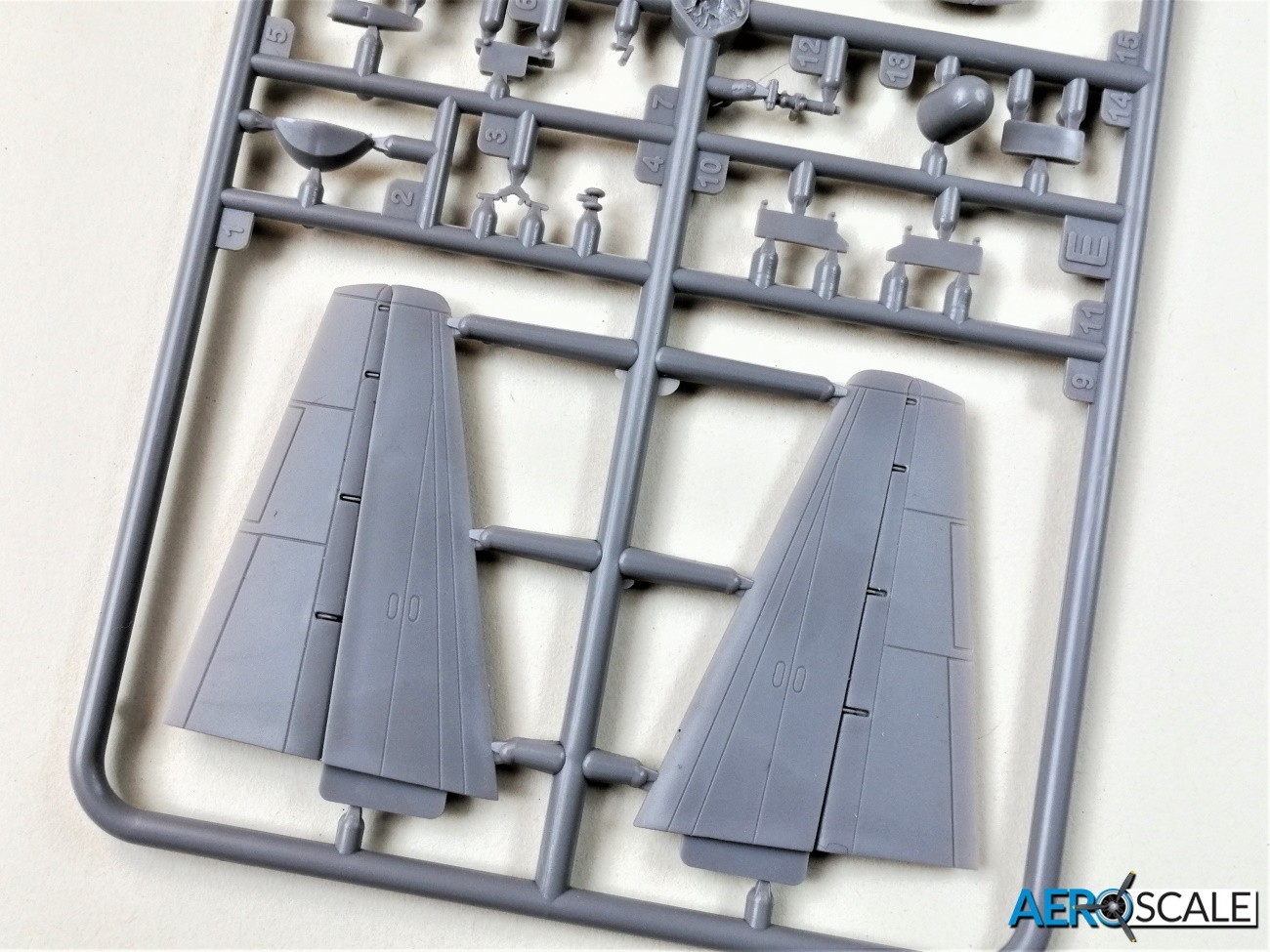
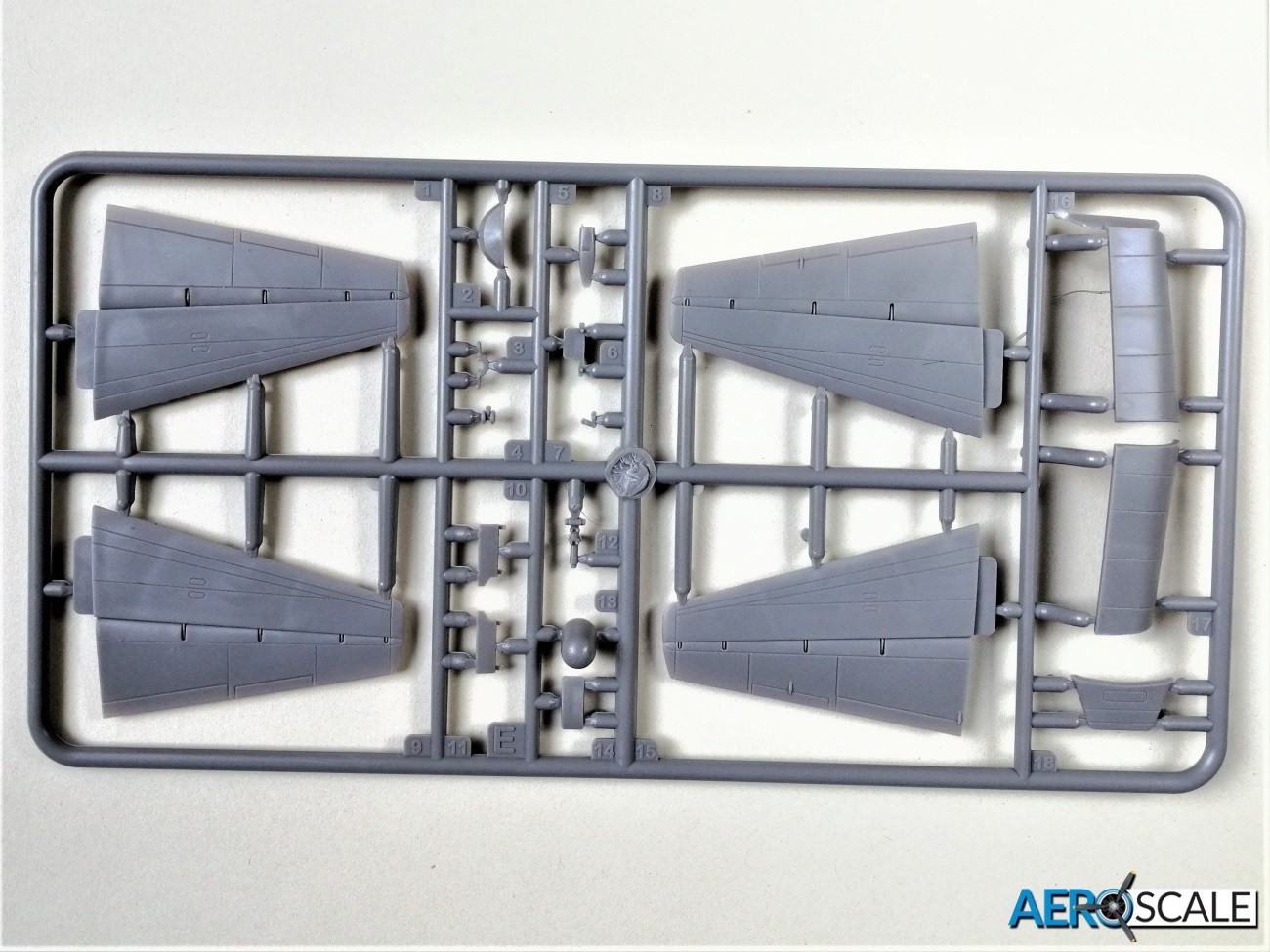

You don’t often see a cockpit in 1:144 scale aircraft models, but this one has. There is a flight deck floor with centre console and separate rear bulkhead, four seats, two control columns, engineers desk. There are three clear parts for the windscreen and side panels. Roden has made a good attempt at creating the faceted look to the windscreen. You might want to re-create the distinctive ‘bay window’ look on the window directly in front of the captain’s seat.


The fuselage is made up from four parts: the tail section including the ramp is separate. The fuselage is around 32.5cms [12.8”] long. Locating pins are included There is a good amount of ribbed detail on the inside of the fuselage. This extends from the inside of the tail section into the fuselage as far forward as the trailing edge of the wing. There are some recessed ejection marks between the ribs to contend with, but they should be easy enough to eradicate with filler and narrow sanding sticks. There is a lip around the rear of the forward fuselage that fits into the tail section facilitating a stronger join. There are separate cargo doors, one acts as the ramp. The hydraulic arms for the ramp are separate. The instructions show that the doors are to be displayed open. All the windows, twenty-one in all, for the cargo bay are separate and there is a separate part representing the access door for the flight crew. Steps are moulded on the inside. The Pinocchio radome has a couple of locating pins. Ten grams of weight is advised to move the centre of gravity forward to avoid this kit becoming a tail sitter.
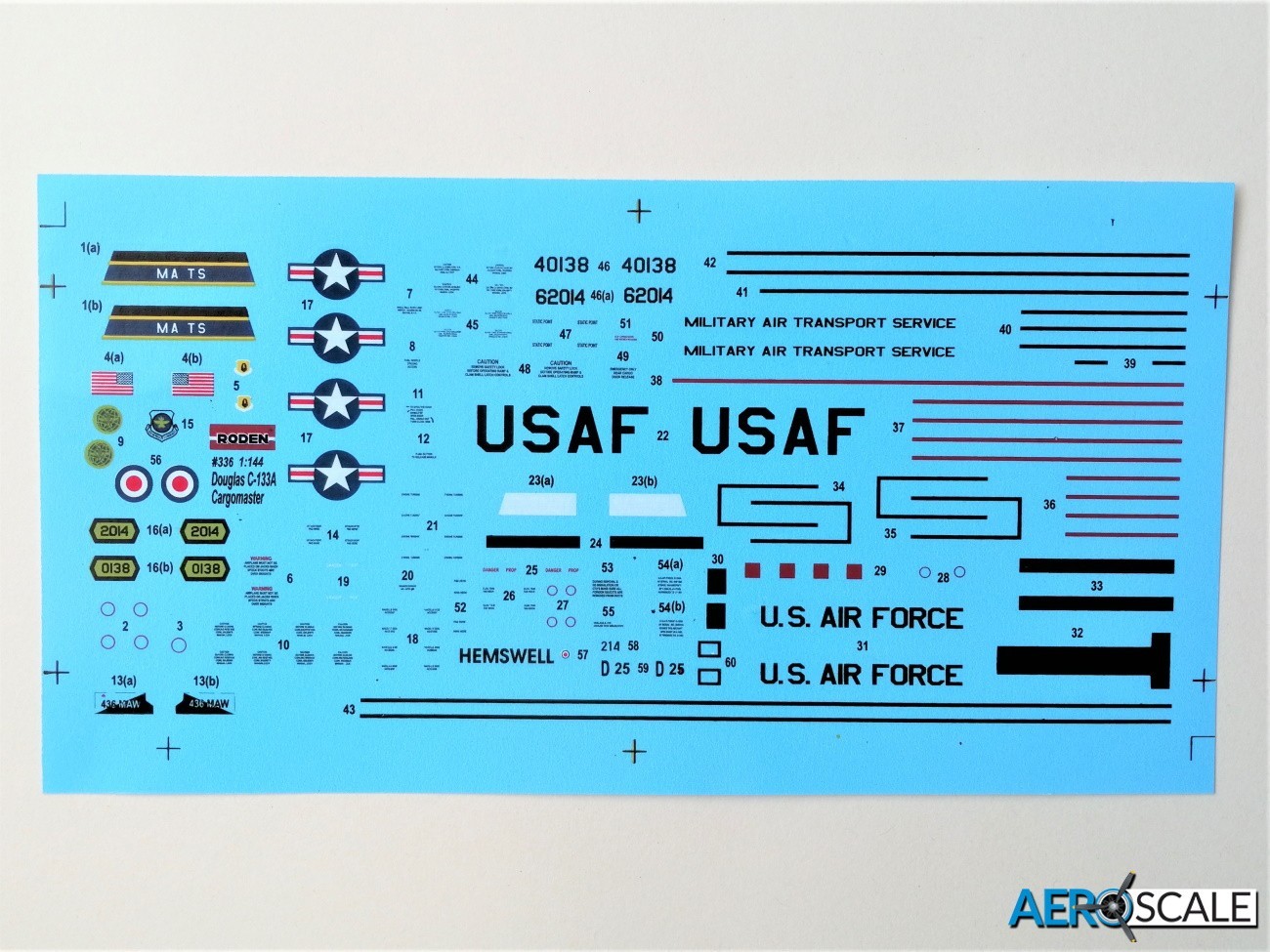
C-133 size comparison with similar scale Fw-200
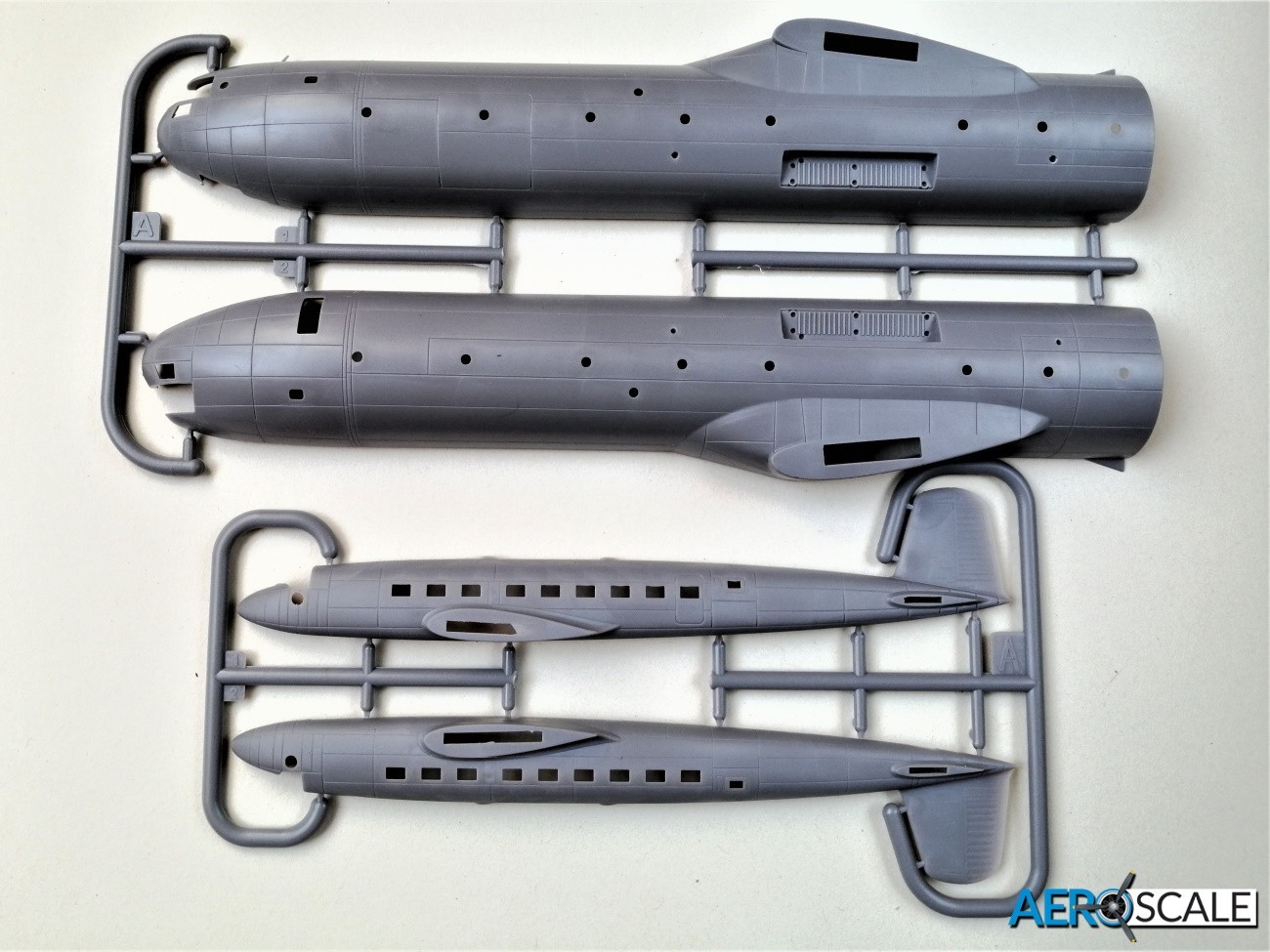
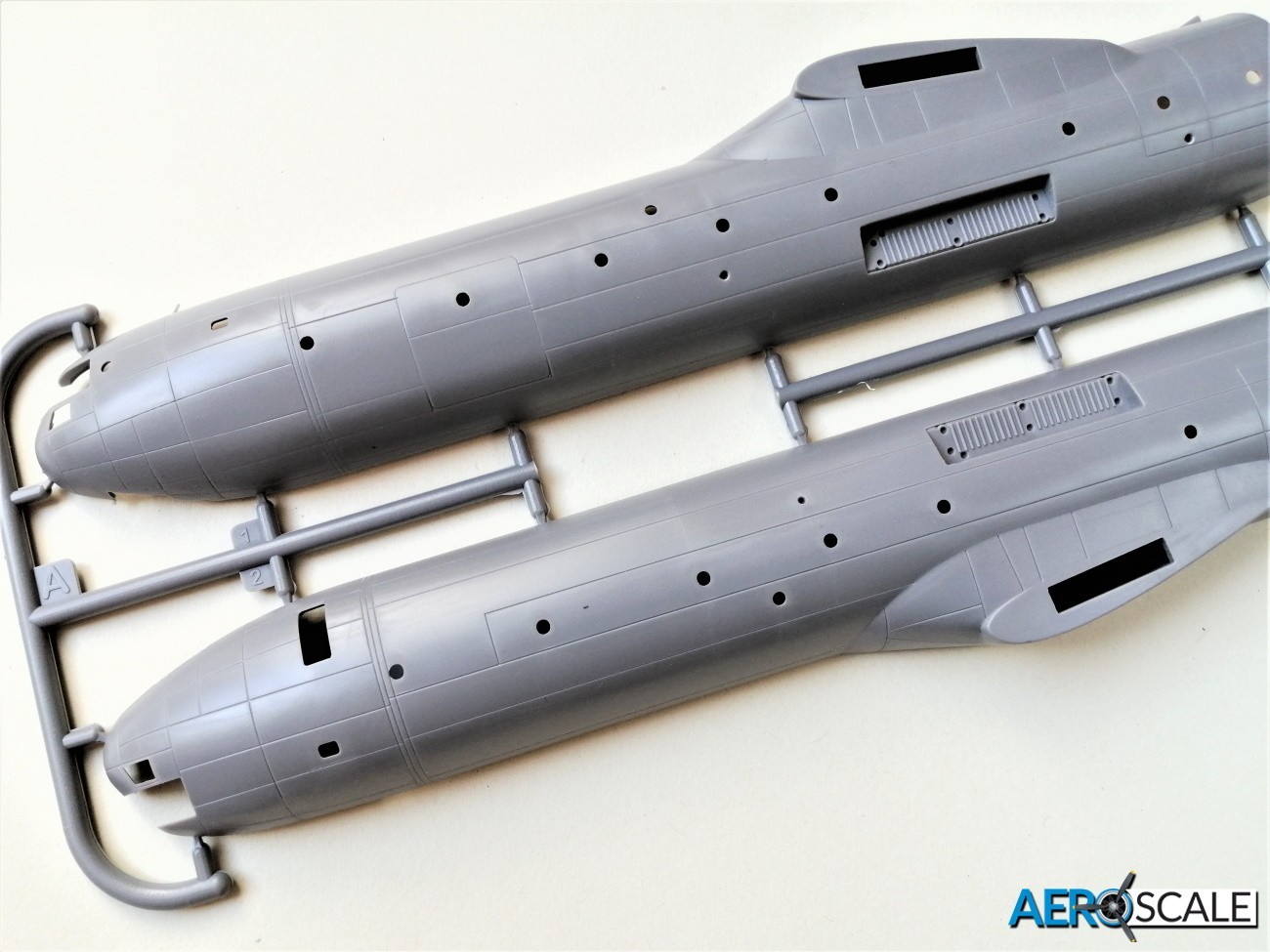
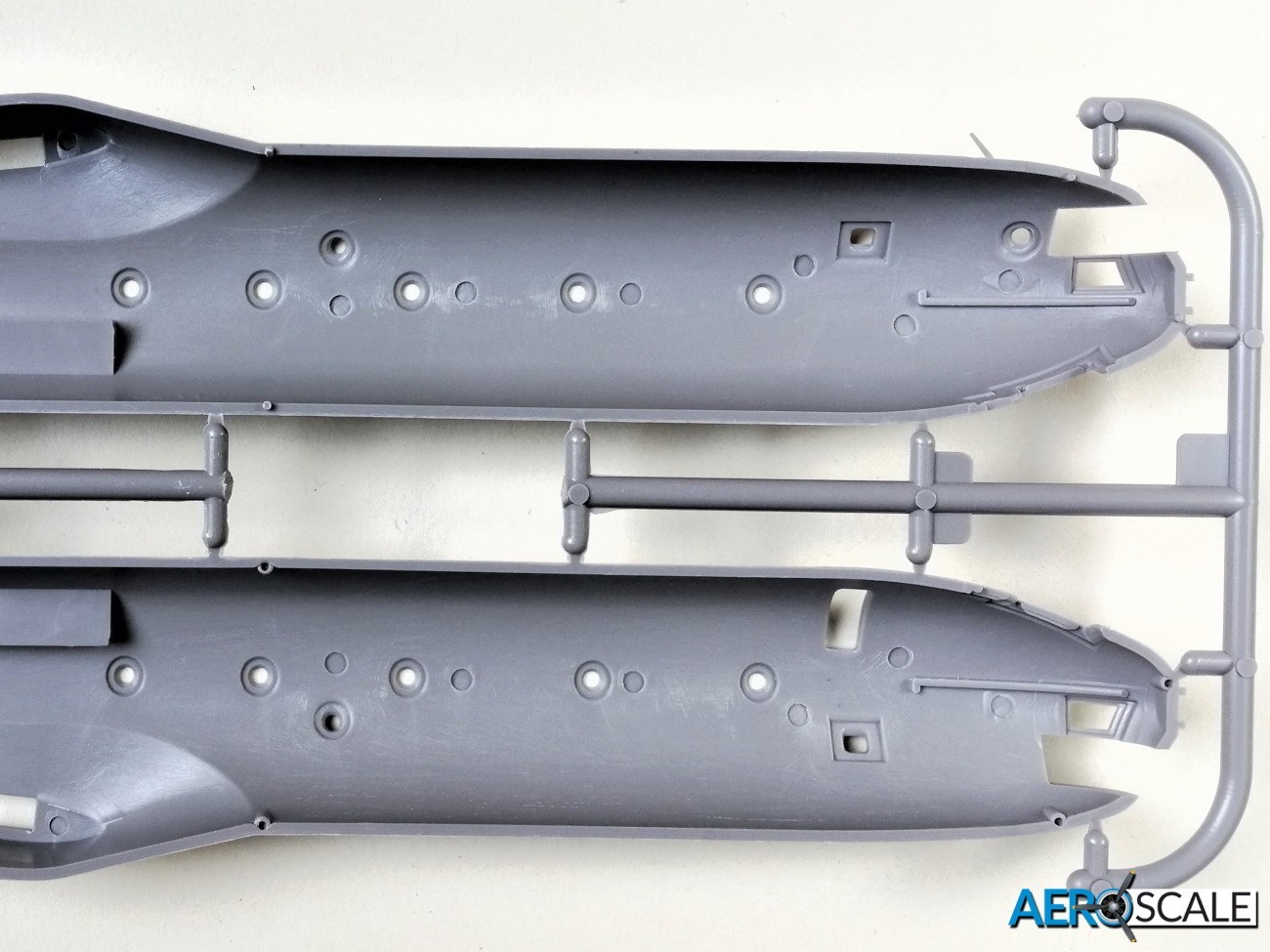
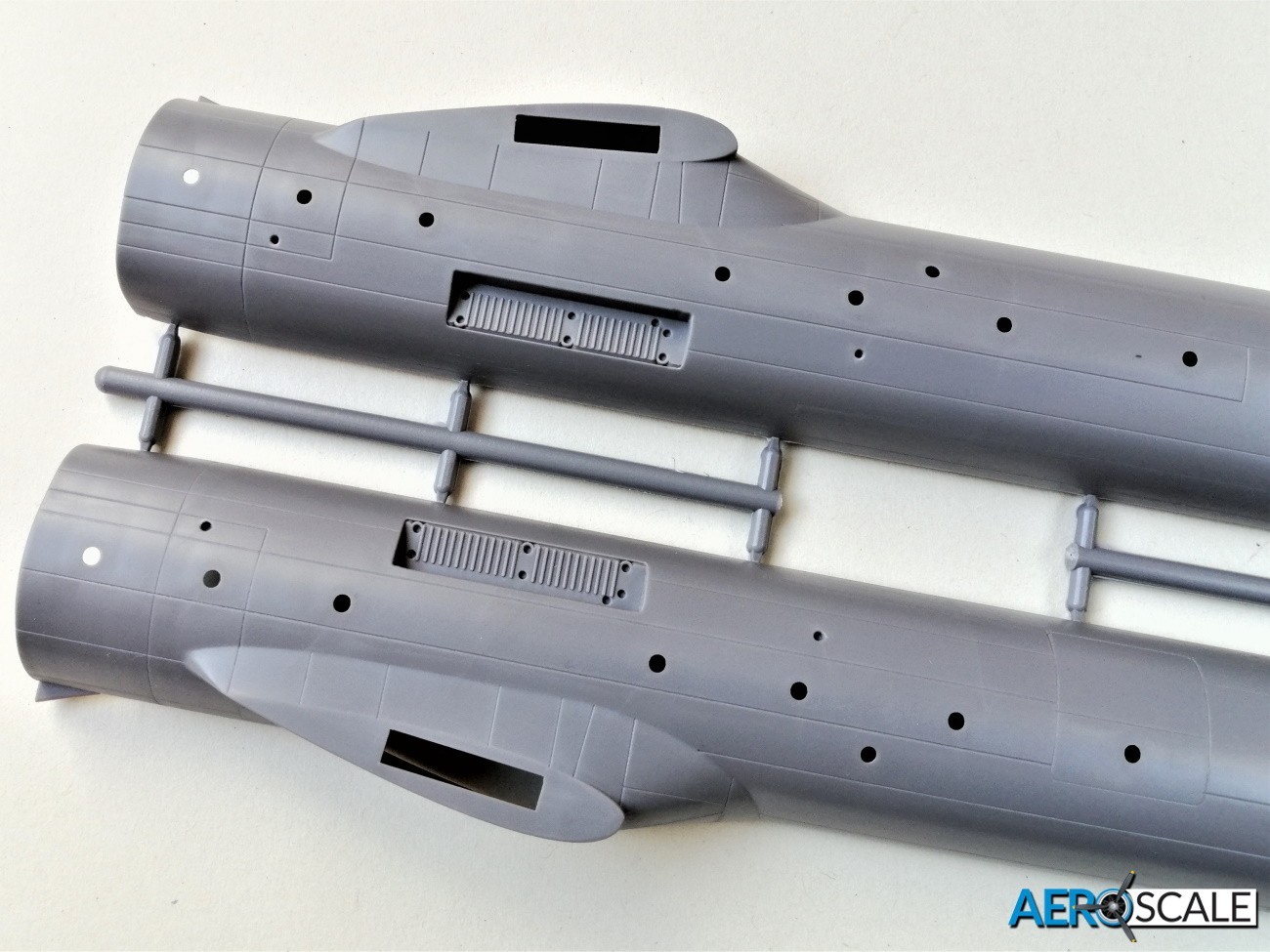

Each wing is made up from two parts and there is a generous tab to fit into the shoulder of the fuselage. The horizontal tailplanes are similarly made up from two parts. There are no separate control surfaces and the span of the main wing in this scale is 38cms [15”]. The nacelles for the turbine engines are each made from three pieces. You may want to add a cut off tube to represent the exhaust as this area is blanked off without detail. Roden always seem to have a good knack of representing the squared of props with their range of passenger and cargo aircraft and this set is no exception.
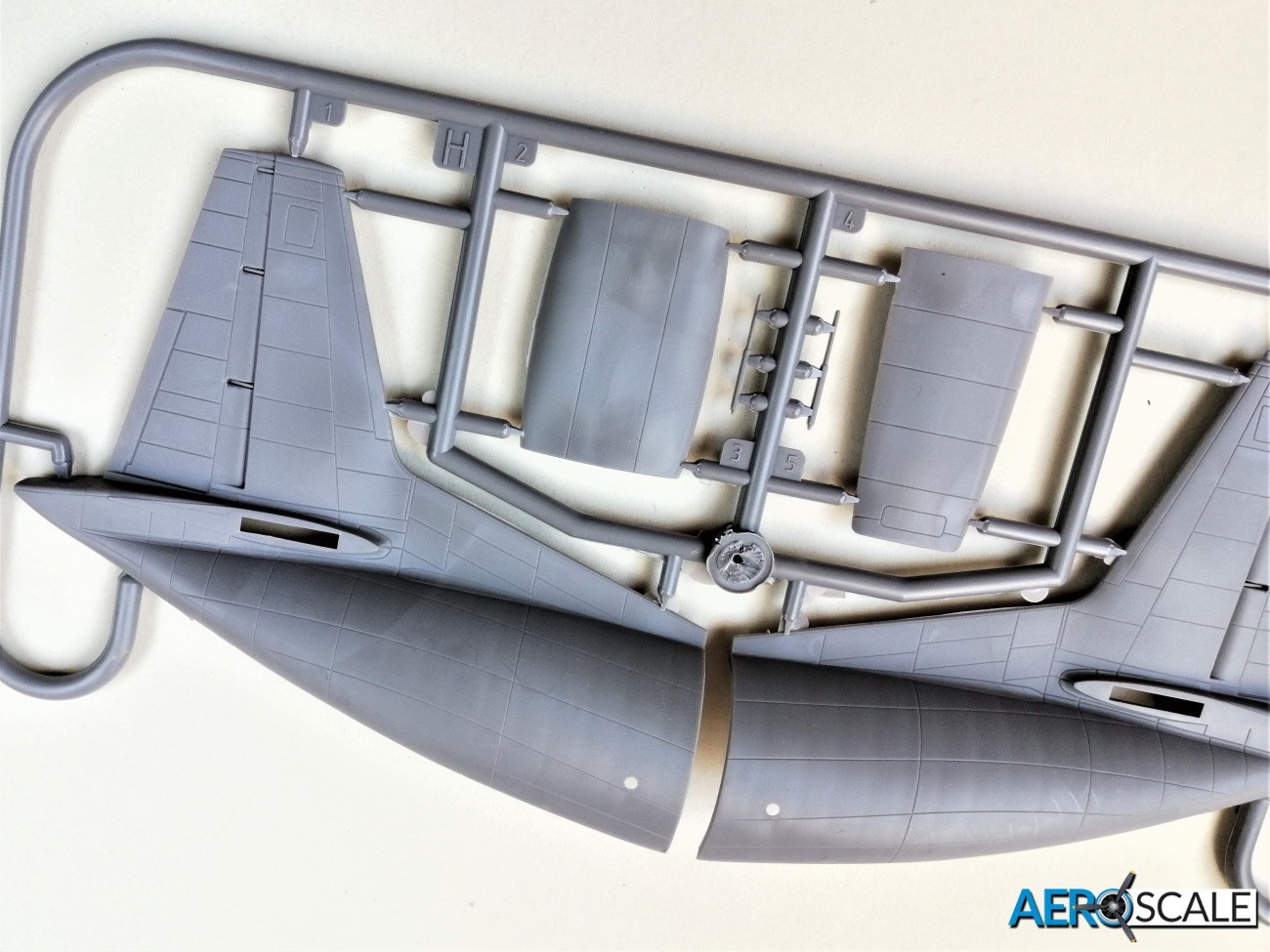

The undercarriage is probably the most complex parts to put together. There are eight wheels for the main undercarriage. Each two wheeled bogey is made up from two parts, while each wheel is two parts. The complexity of each oleo is nicely represented, but there is a little flash that will need cleaning up. These are attached into undercarriage bay on the fuselage, the bays having raised ribbed detail. Then the sponsons are attached over them. The retraction mechanisms for the main gear doors are also featured, so this area will look pretty busy when completed. The fairing on the left main gear door for the gas turbine auxiliary power unit is separate. The front wheel bay is separate and has some detail on the walls. The undercarriage doors could do with their thicknesses reduced. The inclusion of the small set of wheels to prevent the real thing tail sitting when unloading the cargo is also included.
The rather blunt looking Thor missile is made up from six parts. Detail is again good, and the ribbed structure of the main engine nozzle is nicely reproduced. The two-part trailer is built from sixteen parts.
Just the one set of markings for 54-0138 and you will not be too surprised to find that it’s finished in natural metal overall.

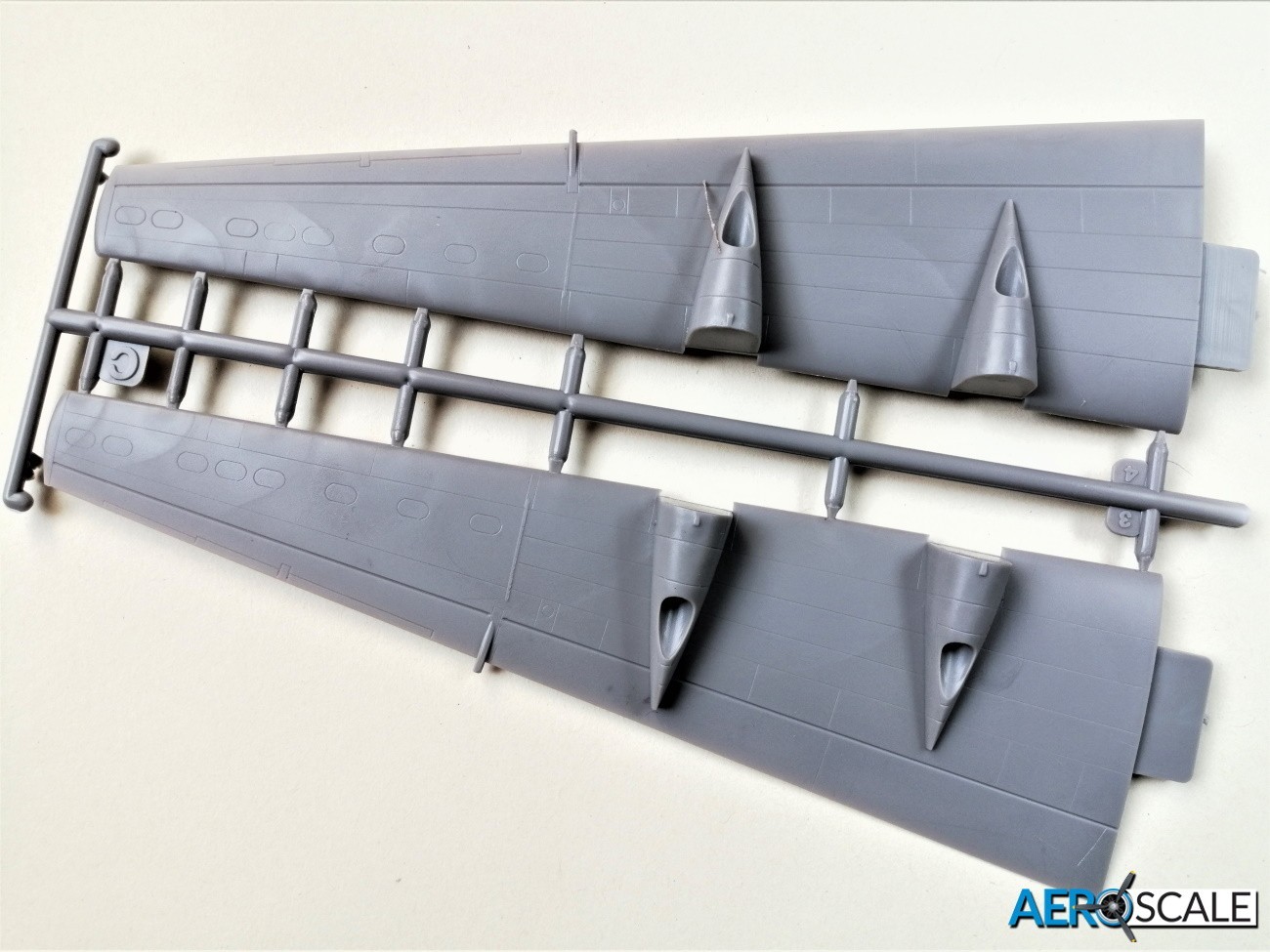
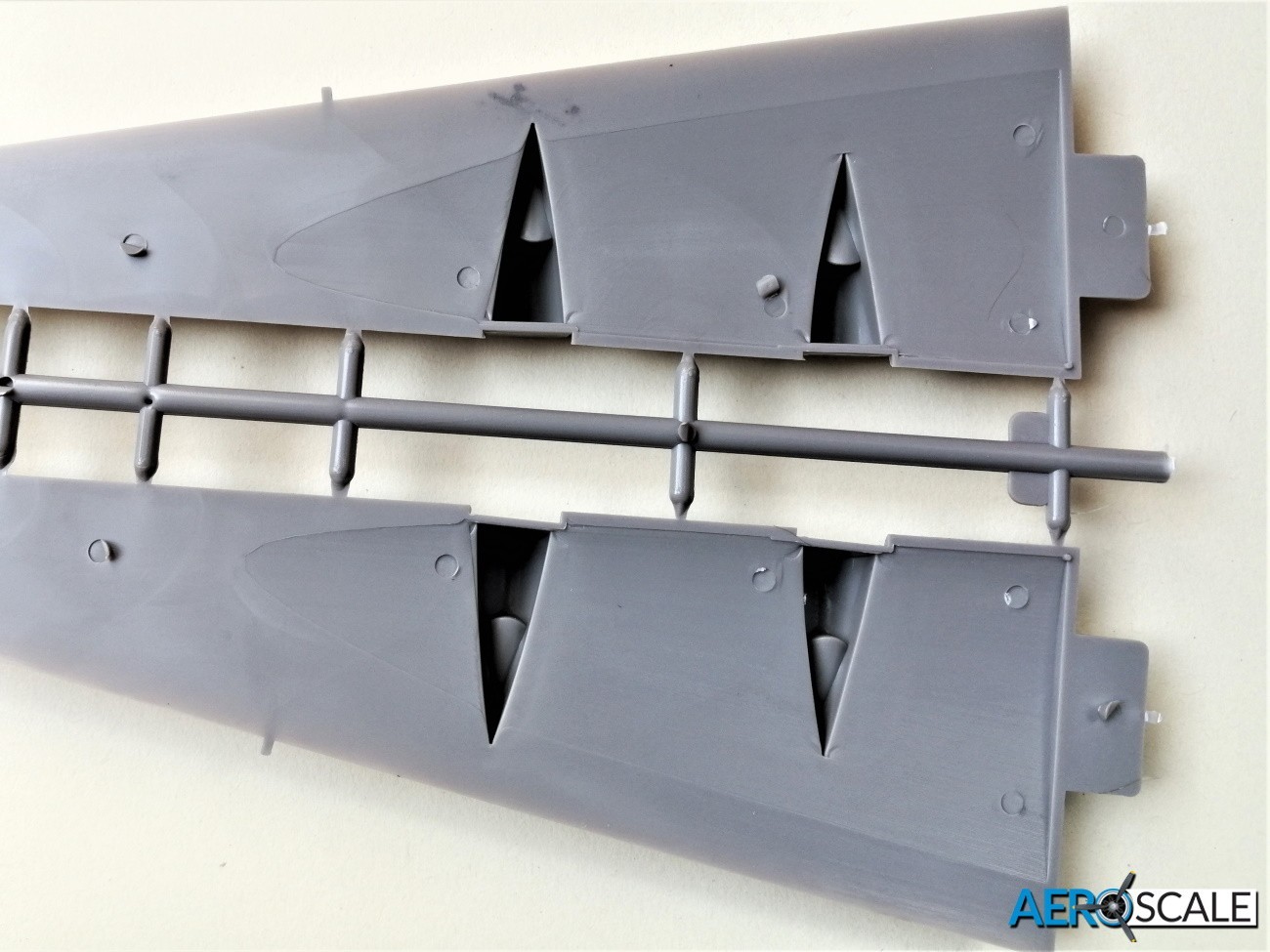
Decal sheet looks pretty good. Colour depth and registration are spot on. The definition is very good as most of the stencils are legible. There are wing walkways, de-icers for the vertical and horizontal tail surfaces as well as red lines warning of the props are included. The RAF roundels for the missile, is inaccurate, so find an alternative.

Conclusions
This is a great looking aircraft occupying a significant niche in the short history of strategic airlifting and we need to be extremely grateful to Roden for releasing it. They’ve provided a great basis for modellers and the inclusion of the Thor IRBM is a real bonus. The scale suites the size of the Cargomaster and it will be interesting seeing it sat next to similar scale lifters and airliners on your model flight line. Highly recommended.
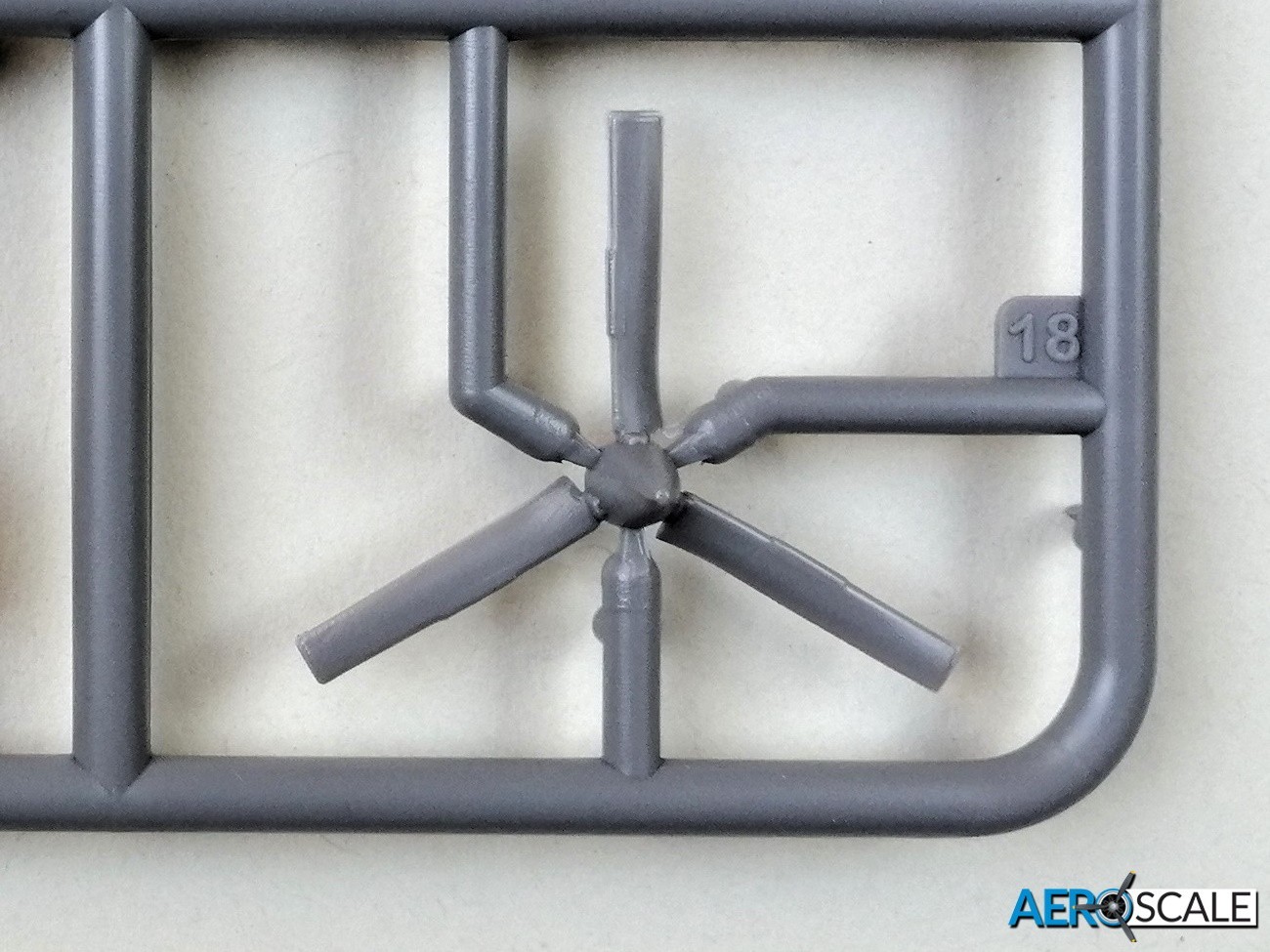
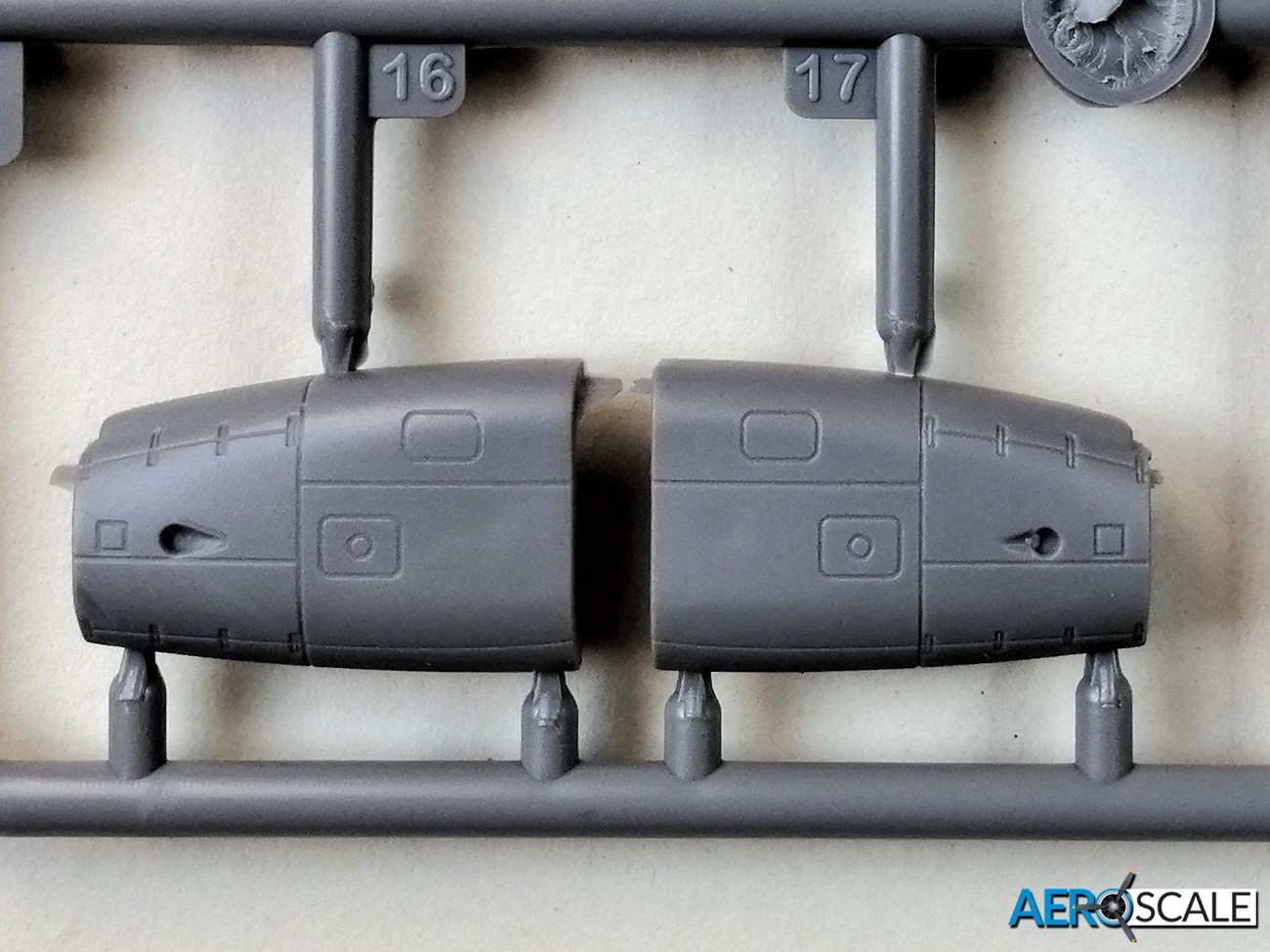
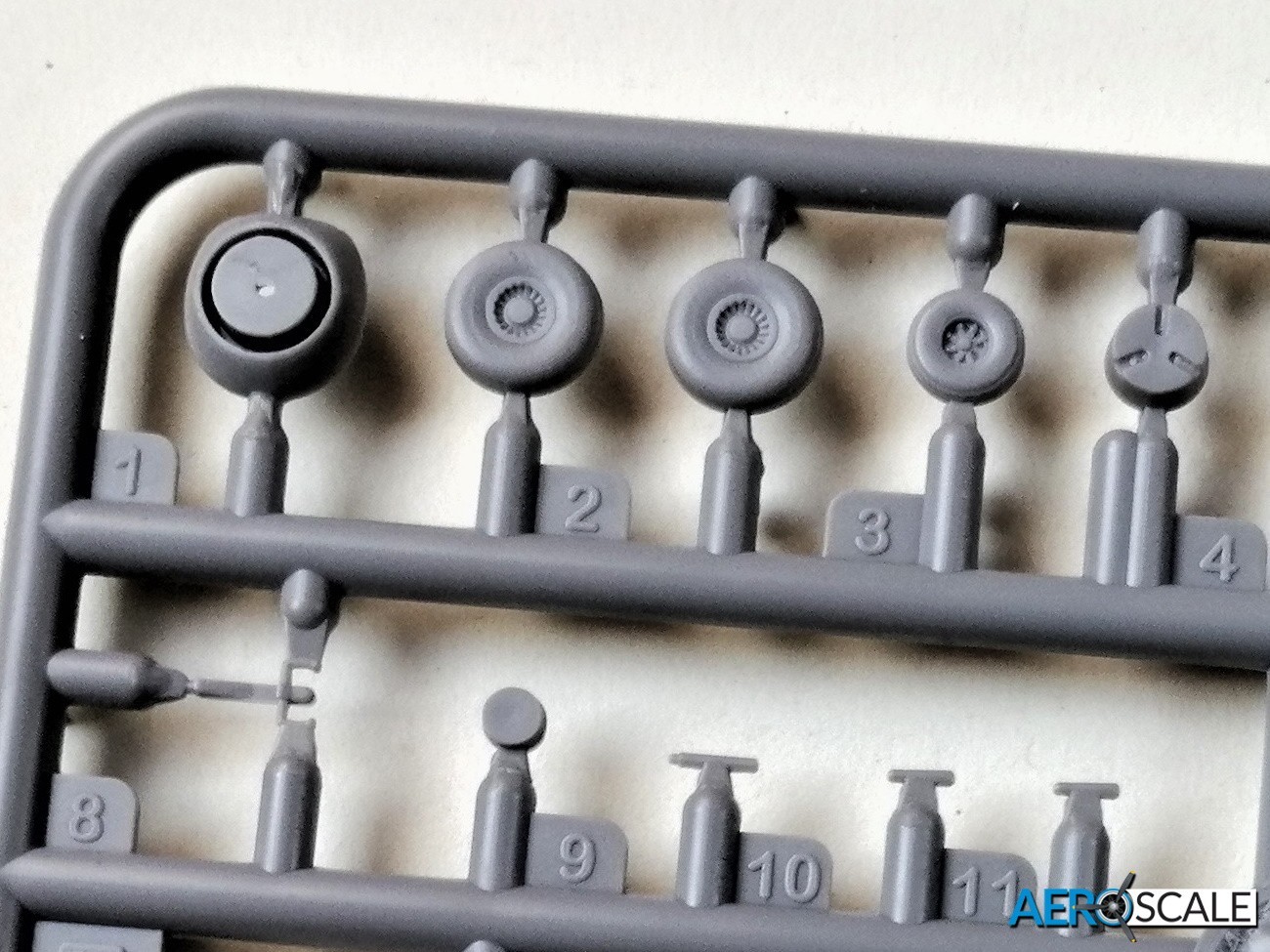
Our thanks to Roden for the review sample
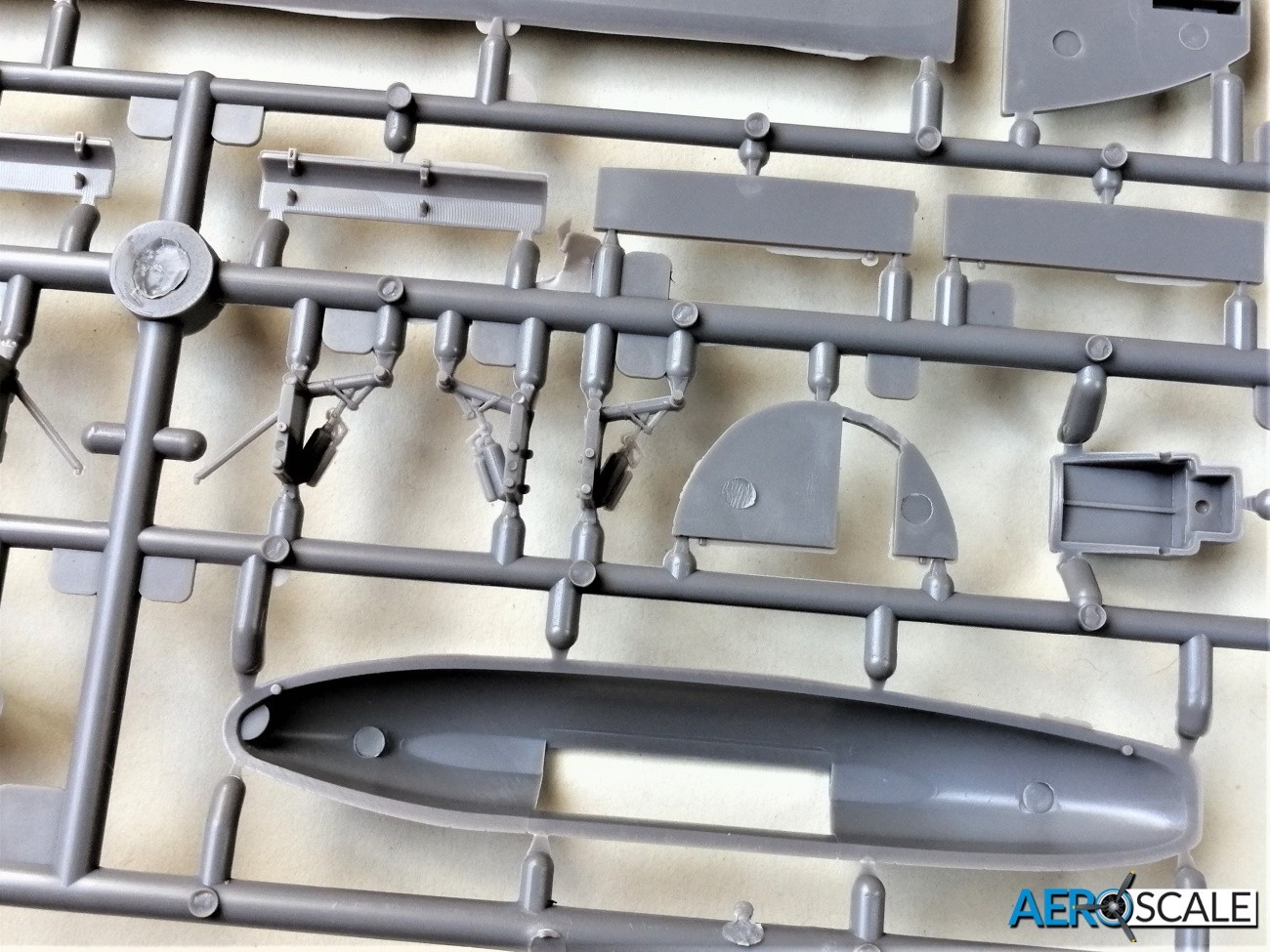
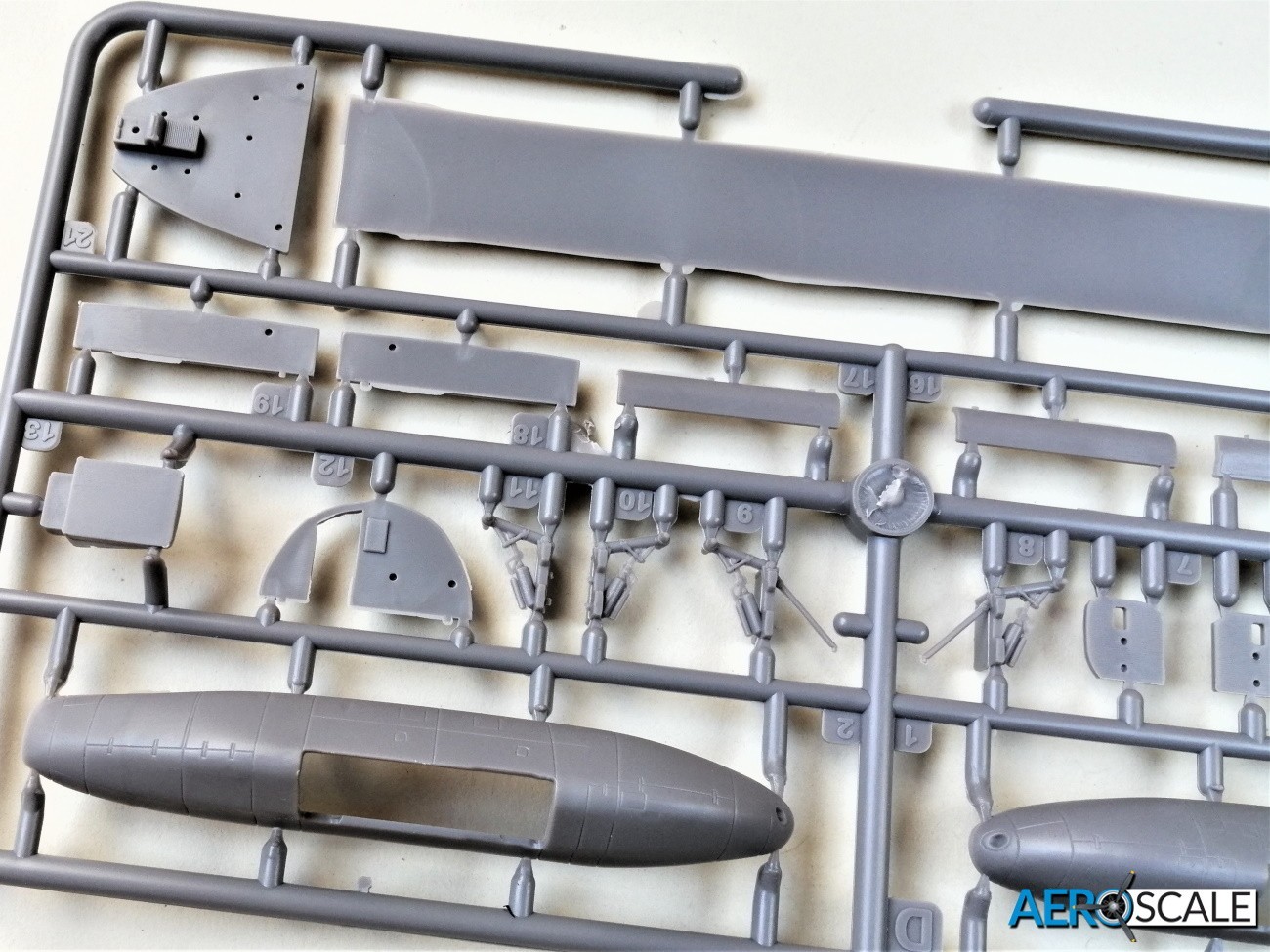
336 – Douglas C-133A with Douglas PGM-17 Thor IRBM - 1:144
Please remember, when contacting retailers or manufacturers, to mention that you saw their products highlighted here – on AEROSCALE
